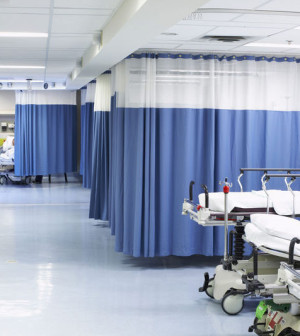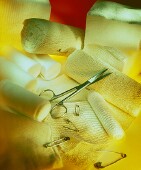- Navigating Your Midlife Crisis: Embracing New Possibilities
- City Raccoons Showing Signs of Domestication
- Mapping the Exposome: Science Broadens Focus to Environmental Disease Triggers
- One Week Less on Social Media Linked to Better Mental Health
- Your Brain Changes in Stages as You Age, Study Finds
- Some Suicide Victims Show No Typical Warning Signs, Study Finds
- ByHeart Formula Faces Lawsuits After Babies Sickened With Botulism
- Switch to Vegan Diet Could Cut Your Greenhouse Gas Emissions in Half
- Regular Bedtime Does Wonders for Blood Pressure
- Dining Alone Could Mean Worse Nutrition for Seniors
Very Special Delivery: Unused U.S. Surgical Supplies


Unused medical supplies from American hospitals could improve the safety of surgeries around the world, a new report says.
Certain large academic U.S. medical centers alone produce about 2 million pounds of surplus medical supplies each year, the researchers estimated.
“In ORs [operating rooms] throughout the U.S., surgical supplies are often packaged together. Upon being opened, there are commonly excess supplies that remain unused,” said Dr. Richard Redett, a report co-author and director of pediatric plastic and reconstructive surgery at Johns Hopkins Cleft Lip and Palate Center.
“Those items typically are taken off of the back table before the incision is made, so they’re completely sterile and unused,” he said in a news release from the Clinical Congress of the American College of Surgeons.
The findings are based on the experiences of the Supporting Hospitals Abroad with Resources and Equipment (SHARE) program, which began at Johns Hopkins University School of Medicine in 1991. The program recovers unused medical supplies such as gowns and catheters from operating rooms and sends them to developing countries.
In the new report, researchers focused on the benefits that the program provided to two health care centers in Guayaquil, Ecuador.
“Hospital administration and staff can actually get feedback on their policies and practices using programs such as ours, because we collect and generate quite a bit of data,” said Eric Wan, a study co-author and intramural research training award fellow at the National Institutes of Health.
After analyzing donated supplies for three years by quantity and weight, the researchers determined that about 2 million pounds of recoverable medical supplies exist each year in non-rural, large U.S. academic medical centers. Collectively, those donations are worth at least $15 million per year, they said.
Wan would like to see their program expand. “One could dream that every hospital has a program like this and forms community partnerships that are both local and global, so that these supplies don’t become labeled as waste and instead become labeled as a resource that can be shared,” he said.
The study was released Monday at the annual meeting of the American College of Surgeons in San Francisco. Data and conclusions presented at meetings are usually considered preliminary until published in a peer-reviewed medical journal.
More information
For more about the SHARE program, visit Johns Hopkins University School of Medicine.
Source: HealthDay
Copyright © 2025 HealthDay. All rights reserved.










